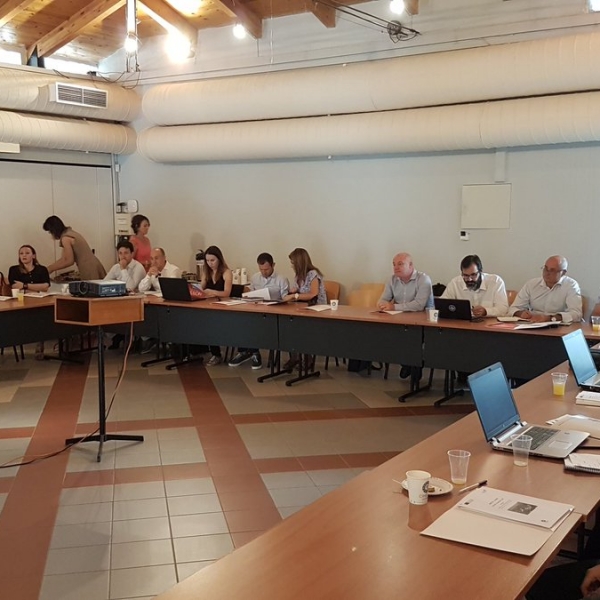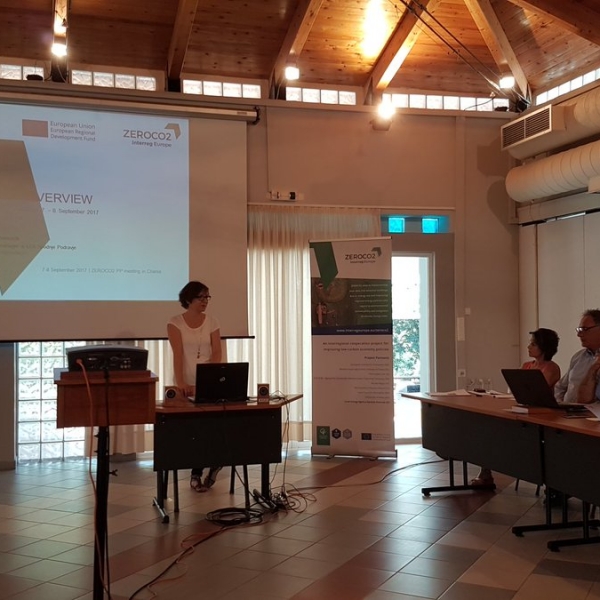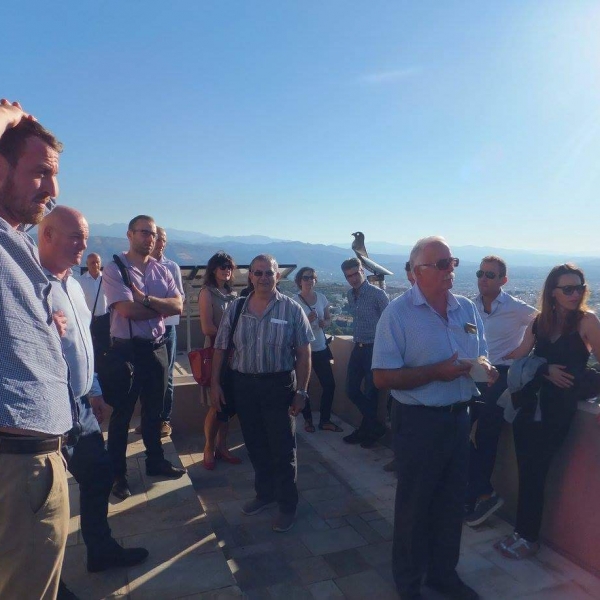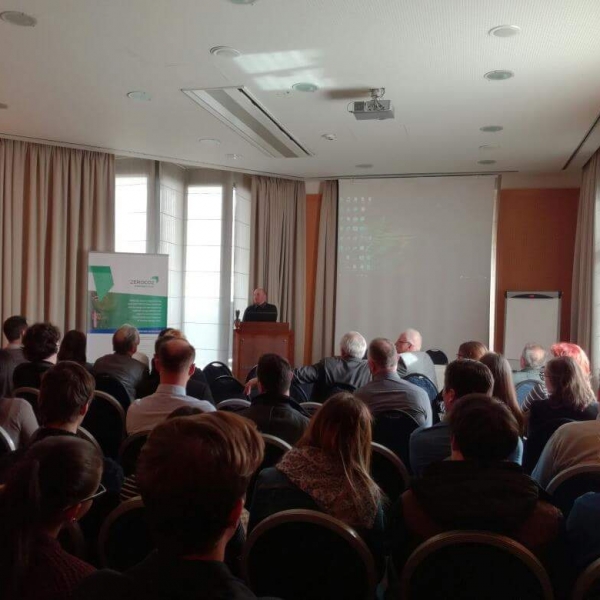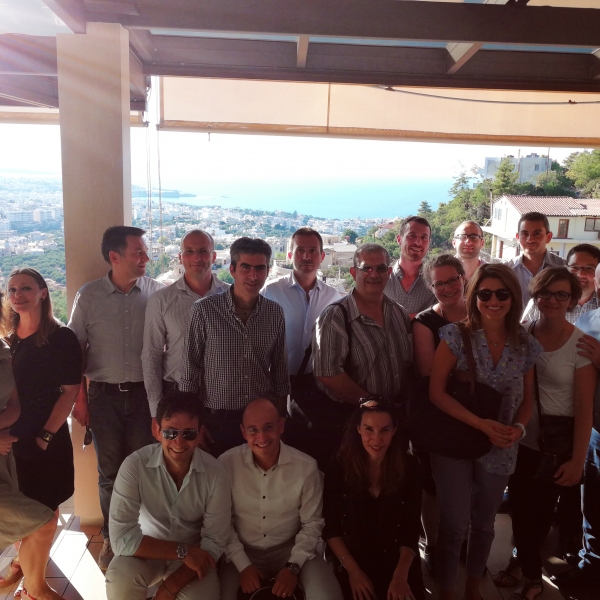
PROMOTION OF NEAR ZERO CO2 EMISSION BUILDINGS DUE TO ENERGY USE
It is estimated that buildings contribute as much as one third of total European Union greenhouse gas emissions, primarily through the use of fossil fuels and natural gas to cover heating, cooling and electricity needs of buildings. To address energy and climate related issues, the European Commission (EC) has set the objectives of reducing greenhouse gas emissions by 20 %, increasing the share of renewables in the EU’s energy mix to 20 % and achieving the 20 % energy efficiency target by 2020.
With Directive 2012 / 27 / EU Energy Efficiency produces a breakthrough in European policies. The objectives and tools of intervention and verification oblige member countries to immediately adopt a clear strategy for the improvement of the performances of the buildings. The EU Directive proposes that after 2020 all new buildings must be zero energy buildings and those buildings will also be Near zero CO2 emission buildings due to energy use (NZCO2EB). Although there has been much recent focus on measures to reduce the emissions from new buildings, the existing building stock remains largely untouched and many refurbishment projects miss opportunities to reduce emissions and deliver low CO2 buildings.
The concept behind ZEROCO2 project is:
- to define near zero CO2 emission buildings due to energy use (NZCO2EB) and present the various benefits which result from this type of building;
- to work on the combination of different technologies and energy efficiency sources, which can be used in order to achieve the abovementioned target;
- to design stateofthe art policies, which will aim at promoting NZCO2EB at the local, regional and national level; to present various financial tools in order to promote these types of buildings.
The project partnership consists of bodies which are in the position to implement regional development policies in close cooperation with relevant stakeholders.
Policy instruments addressed:
- Energy Act, Part V, Chapter 3, Section 3, Energy Performance of buildings, Regulation on energy performance of buildings (Slovenia)
- REGIONAL OPERATIONAL SUPPORT FRAMEWORK (PRIORITIES 1B, 2.4.C, 2.4.F) (Region of Crete)
- Regional Operational Programme ERDFESF of Molise 20142020 (Molise Region)
- Strategic Development Plan of Municipality of Kaunas District for Year 20132020 (Municipality of Kaunas District)
- Cohesion Policy 20142020 (Malta)
- The Regional Strategy of South Ostrobothnia (South Ostrobothnia)
- Operational Programme ERDFESF PACA (Provence Alpes Coter d’ Azure)
Objectives
This project will represent and implement NEAR ZERO CO2 EMISSION BUILDINGS DUE TO ENERGY USE in policies addressed at the samelevel as had been done for NEAR ZERO ENERGY BUILDINGS, which means that the buildings do not produce CO2 emissions due their use. EU, national and regional policies do not define near zero CO2 buildings due to energy use.
SUBOBJECTIVES: The subobjectives of the project will be:
- To define the idea of zero CO2 emission buildings due to energy use and present the various benefits which result from these types of buildings.
- To work on the combination of different technologies, which can be used in order to achieve abovementioned target.
- To design common stateoftheart policies, which will aim at promoting ZEROCO2 in local, regional, national and EU level.
- To present various financial tools in order to promote these types of buildings.
Outputs and results:
The main goal is to influence regional and national policy to incorporate Near Zero CO2 Emission Buildings into the Near Zero Energy Buildings.
The project will deliver the following outputs:
- interregional NZCO2EB events;
- site visits with the stakeholders group; numeros thematic meetings with regional stakeholders. Project partners will discuss tools and activities to include in the Action plan. seminars (in each participating region) for regional stakeholders group (especially for policy makers).
- workshops to develop the Regional Policy Report.
- Regional Policy Report. 7 action plans prepared with interregional cooperation between partners, stakeholders and policy makers.
- regional studies regarding RES in buildings, CO2 emissions by building category, regional policies promoting the use of RES.
- Costbenefit analyse regarding the reduction of CO2 emissions due to energy use in buildings.
- Common Study which will include Best Practice and Policy and Strategy Suggestions for EU and regional level. Best Practice Guide to show possibilities to the stakeholders, experts, residents and owners of the houses how to efficiently transform buildings to the NZCO2EB. Programme web site; used as the main tool for collecting information and dissemination of project results, lessons and progress of the project.
Communication:
- press releases issued at local, regional and national level, articles for the regional press.
- leaflet.
- regional leaflets. newsletters produced (in English) and translated newsletters disseminated (electronically) in order to inform other relevant stakeholders on progress.
- dissemination events organised, to advise overall project results highlevel political dissemination. other promotion events for dissemination of the projects results.
For more information: http://www.interregeurope.eu/zeroco2/
Project duration: 2016 – 2020
Project budget: 1,47 mio EUR, ERDF: 1,23 mio EUR



